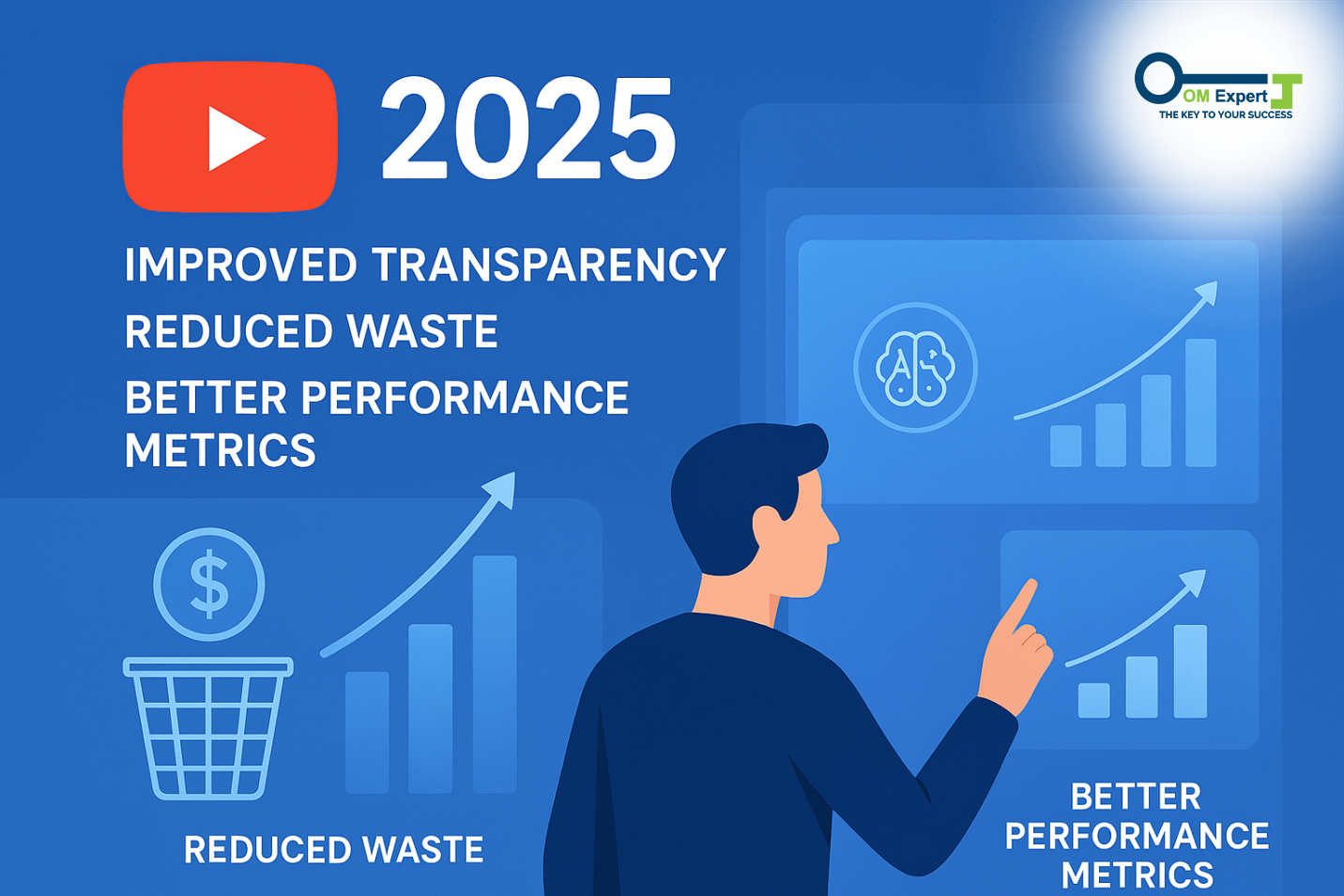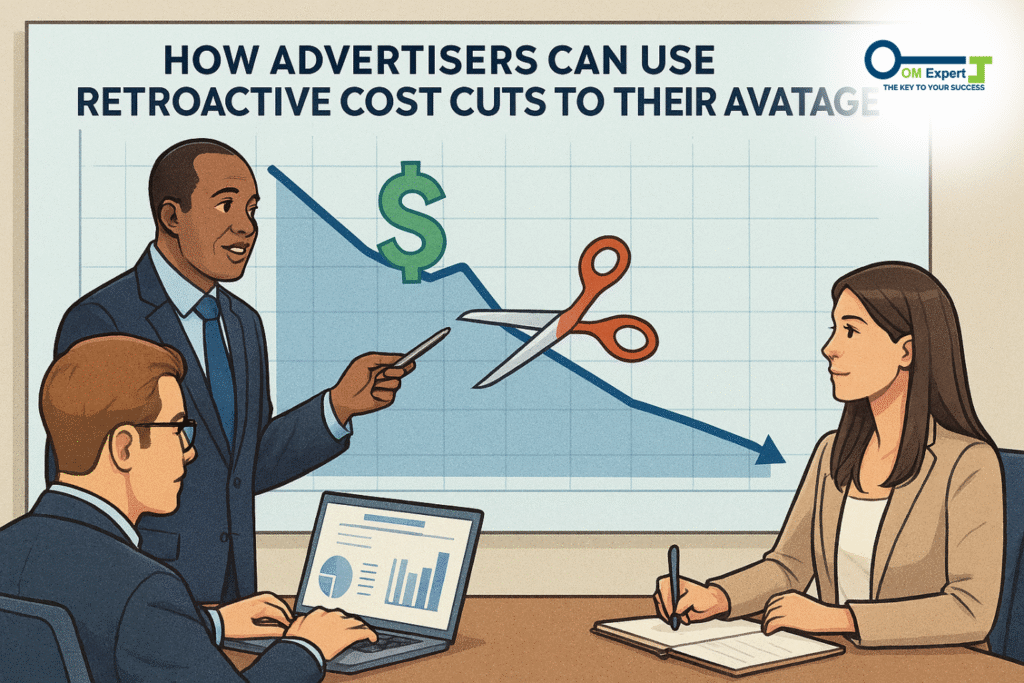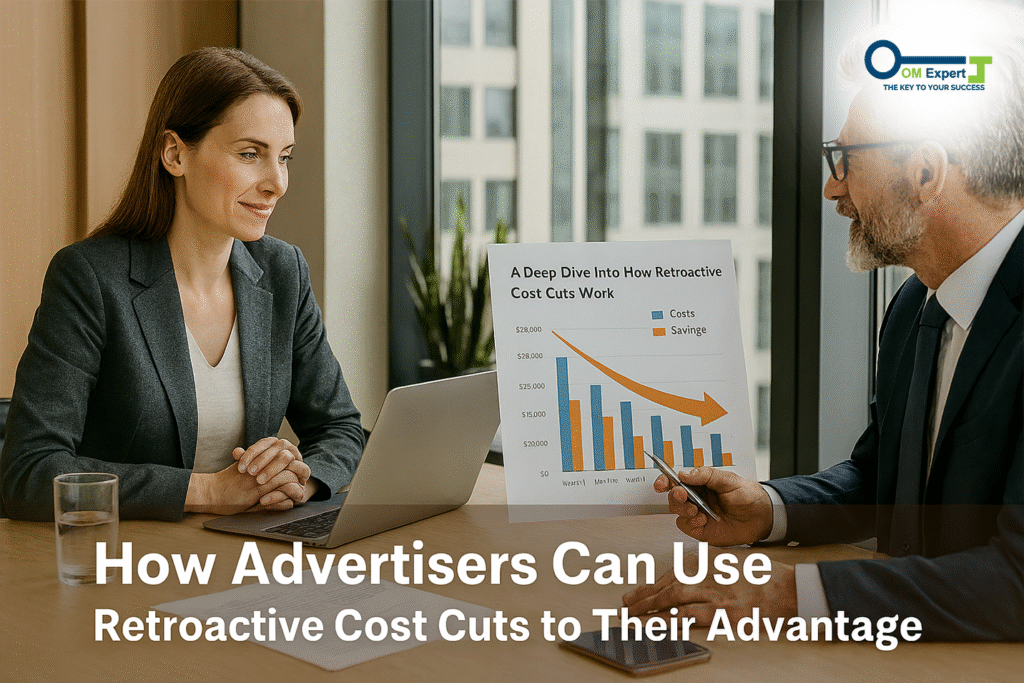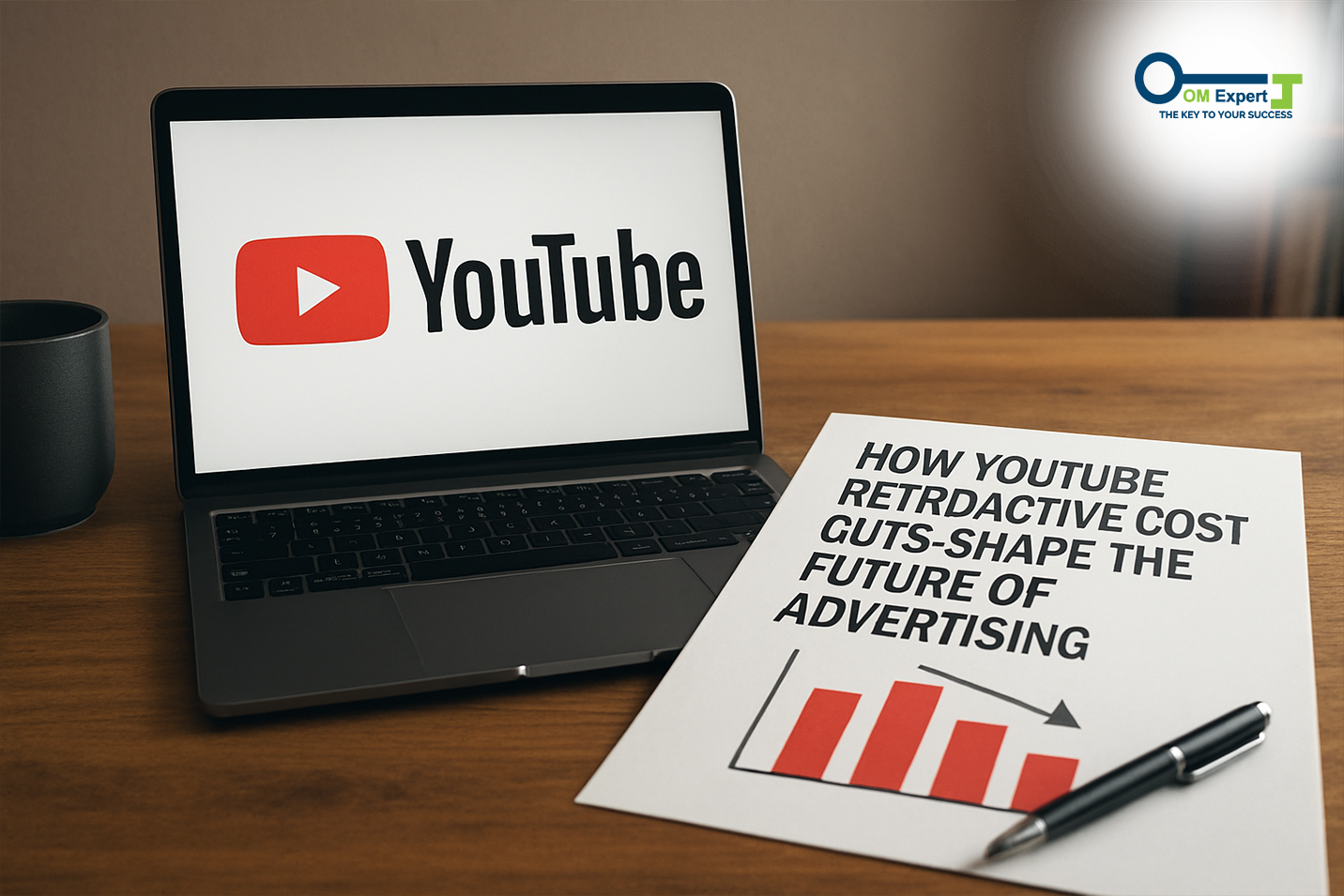How YouTube’s Retroactive Cost Cuts Help Demand Gen Campaigns

The world of online advertising keeps changing fast, and brands are always searching for better ways to save money and improve results. In 2025, YouTube introduced one of its biggest updates for advertisers: YouTube’s retroactive cost cuts. This new feature allows advertisers to get money back if their Demand Gen campaigns do not perform well during the learning phase.
This is a major shift in how YouTube supports marketers, especially those working with limited budgets. Instead of risking huge amounts of money to test new campaigns, advertisers can now feel safer knowing that YouTube will adjust costs after the results are analyzed.
In this blog, you will learn everything about YouTube’s retroactive cost cuts, how they work inside demand generation strategies, their benefits, and how you can use them to improve your campaign performance in 2025. The blog also explains the connection between YouTube demand generation, budgeting, targeting, optimization, and the future of smart video advertising.
What Are YouTube’s Retroactive Cost Cuts?
A New Way to Make Advertising Fair
Traditionally, advertisers paid based on bids and results. If a campaign underperformed, the only option was to stop it and lose part of the budget. But with YouTube’s retroactive cost cuts, YouTube analyzes your Demand Gen campaign performance after it has run. If the system detects that the ads were too costly compared to their results, YouTube automatically reduces those costs and returns the difference to the advertiser. This refund-like approach makes YouTube more advertiser-friendly than ever.
Why YouTube Introduced This Feature
As competition in online advertising grows, platforms need to offer more value. Advertisers want a platform that not only delivers results but also supports them during market fluctuations.
YouTube noticed that many Demand Gen campaigns struggle during the learning phase because the algorithm is still figuring out the right audience. The platform wants advertisers to experiment without fear of wasting money. That’s exactly where YouTube’s retroactive cost cuts come into play.
Why This Update Matters in 2025

YouTube’s Retroactive Cost Cuts Reduce Wastage
In digital marketing trends 2025, wasted ad spend is one of the biggest problems. Brands often lose money on testing, experimentation, and early-stage optimization errors. But with YouTube’s retroactive cost cuts, unnecessary expenses are refunded, giving advertisers a real chance to optimize without fear.
It Encourages Smarter Targeting and Testing
Marketers can now try new audience targeting ideas without worrying about the budget. They can test creatives, thumbnails, ad styles, and offers more freely. This leads to better-quality ads, stronger engagement, and smarter audience discovery.
It Supports the Rise of Performance-Based Advertising
2025 is heavily focused on performance marketing and measurable results. This update aligns perfectly with that trend by ensuring advertisers pay only for real value. It blends transparency, fairness, and performance accountability into one system.
Makes YouTube More Competitive Among Advertising Platforms
With Google Ads, Meta Ads, TikTok Ads, and LinkedIn all offering performance tools, YouTube needed a breakthrough. YouTube’s retroactive cost cuts give the platform a unique competitive advantage by offering financial protection that other platforms currently don’t provide.
How Advertisers Can Use Retroactive Cost Cuts to Their Advantage

Start with Small Tests Before Scaling
Advertisers should launch multiple small test campaigns. The system will adjust your expenses later, so testing becomes safer and more cost-efficient.
Monitor Learning Phase Closely
Even though YouTube refunds overspending, keeping an eye on campaign performance during the early stages helps you understand audience behavior faster. You can identify patterns and adjust quickly.
Improve Creative Quality
High-quality videos produce better results. Using better scripting, visuals, and hooks reduces the need for refunds because your campaigns will perform well naturally.
Focus on Clear Audience Signals
When you provide YouTube with strong audience signals such as interest-based targeting, custom segments, and retargeting lists, the learning phase becomes more stable, and costs drop.
Track Cost per Lead, Sale, or Action
Retroactive cuts affect overall spending, but keeping track of conversion metrics ensures you optimize your campaigns sensibly.
A Deep Dive into How Retroactive Cost Cuts Work

The Algorithm Tracks Campaign Efficiency
YouTube’s system constantly monitors how your campaign is performing. It studies data such as impressions, clicks, conversions, audience behavior, and even your bidding history. By analyzing all these signals, the algorithm understands which parts of the campaign were efficient and which areas were too expensive.
This deep tracking helps YouTube identify situations where your ads cost more than they should have, especially during the learning phase when the system is still figuring things out.
It Calculates the “Fair Cost” of Your Results
After the learning phase ends, YouTube evaluates the performance of your campaign using market standards and competitive data. It calculates what a reasonable cost should have been based on the results you achieved.
This fair cost measurement removes unnecessary overspending and sets a balanced price for your ad delivery. By doing this, YouTube ensures that you’re only paying an amount that truly reflects your campaign’s actual performance and market efficiency.
It Automatically Adjusts Your Investment
If YouTube detects that you paid more than necessary during any part of the campaign, it begins the adjustment process. Overspending may occur because the system was still exploring audiences or because certain placements were not productive.
YouTube automatically corrects these imbalances by reducing the final cost of your campaign. This adjustment happens behind the scenes, giving advertisers the benefit of fair pricing without needing to take any manual action.
Refund Is Issued or Budget Is Adjusted
Once the cost correction is complete, YouTube updates your account accordingly. Depending on how your billing is set up, you may receive a refund directly back to your payment method, or your future ad budget may be adjusted to reflect the reduced cost.
This process ensures transparency and gives advertisers complete clarity on how their money is being handled. It also builds trust because you can clearly see how YouTube is correcting unnecessary expenses.
You Get a Detailed Performance Summary
To make the process even more useful, YouTube provides a detailed performance summary showing exactly how your campaign behaved. This report highlights what worked well, which audiences engaged the most, and where the system found inefficiencies.
These insights help you understand the strengths and weaknesses of your campaign so you can make smarter decisions in your next advertising strategy. The summary also helps you optimize your creative, targeting, and budgeting plans for better long-term performance.
How YouTube’s Retroactive Cost Cuts Shape the Future of Advertising

More Transparency in Advertising
Advertisers want clarity, and YouTube’s new approach delivers exactly that. When brands can clearly see how their budget was spent and how much was adjusted later, it builds trust in the platform. Instead of guessing why a campaign performed a certain way, advertisers now get a clearer picture of real costs, learning behavior, and audience performance.
This level of openness shows YouTube’s strong commitment to fairness, making advertisers feel confident that they’re being charged honestly and accurately for the results they receive.
Reduced Testing Risks Inspire Innovation
Testing is a major part of modern advertising, but it usually comes with financial risks. With YouTube’s retroactive cost cuts, creative teams are more confident to experiment. They can try new video styles, longer or shorter formats, fresh storytelling ideas, and unique hooks without the fear of losing too much budget.
This financial protection encourages innovation and helps brands discover smarter, more engaging ways to connect with their audience. As a result, the overall quality of YouTube ads improves, benefiting both viewers and advertisers.
Better Long-Term Planning
Stable, predictable budgeting is essential for businesses of all sizes. When brands know that YouTube will make cost adjustments if early performance is unstable, they can plan campaigns with much more confidence. This makes quarterly and yearly advertising forecasts more reliable.
Teams can allocate budgets more accurately, choose the right campaign types, and even plan seasonal promotions more effectively. In short, the reduced financial uncertainty allows companies to create stronger
Stable, predictable budgeting is essential for businesses of all sizes. When brands know that YouTube will make cost adjustments if early performance is unstable, they can plan campaigns with much more confidence. This makes quarterly and yearly advertising forecasts more reliable.
Teams can allocate budgets more accurately, choose the right campaign types, and even plan seasonal promotions more effectively. In short, the reduced financial uncertainty allows companies to create stronger long-term marketing strategies that deliver better results over time.
Encourages More Brands to Use Video Marketing
Video marketing has always been powerful, but many brands avoided it due to high testing costs. With safer and fairer budgeting, thanks to retroactive cost cuts, more businesses, especially small and medium-sized ones, will feel comfortable investing in YouTube ads.
As budgets become more protected, these brands can shift from basic static ads to high-performing video formats. This overall growth in video adoption strengthens YouTube’s position as a leading advertising platform and ensures that more creative, engaging content reaches audiences worldwide.
Conclusion
YouTube’s introduction of YouTube’s retroactive cost cuts is a major win for advertisers, especially those running demand generation campaigns. It lowers financial risk, supports experimentation, and ensures fair pricing even when early campaign performance fluctuates.
This update helps brands plan better, test smarter, and achieve more stable results without worrying about wasted ad spend. As digital marketing becomes more competitive in 2025, features like these make YouTube a more trusted and cost-efficient advertising platform. For more helpful digital marketing insights and updates, you can explore the latest resources and guides available at OM Expert.
